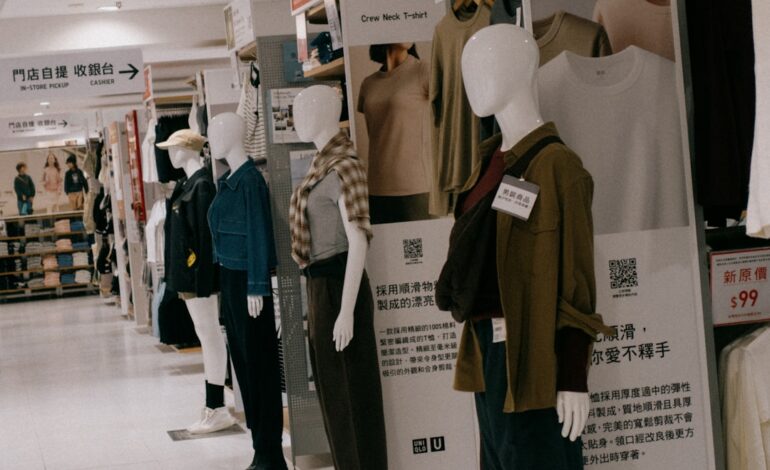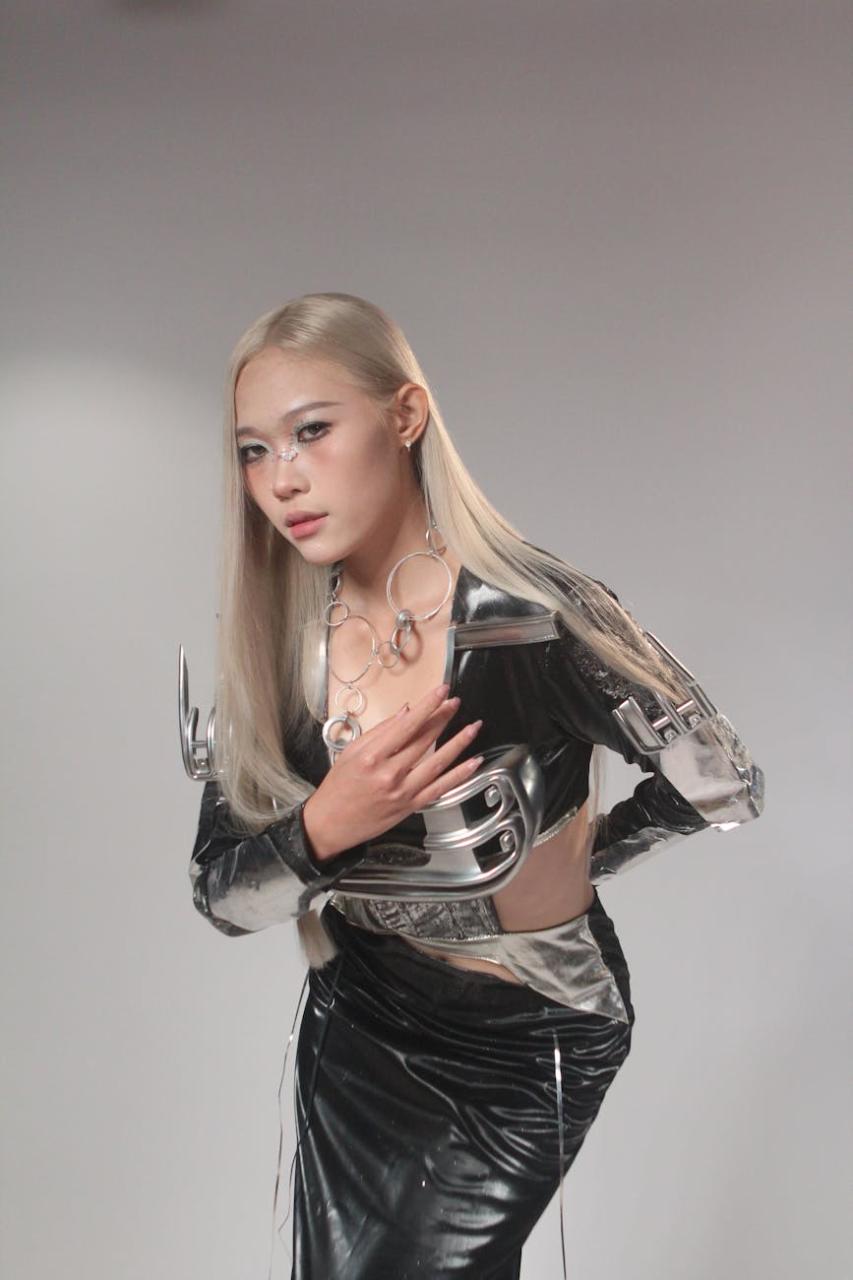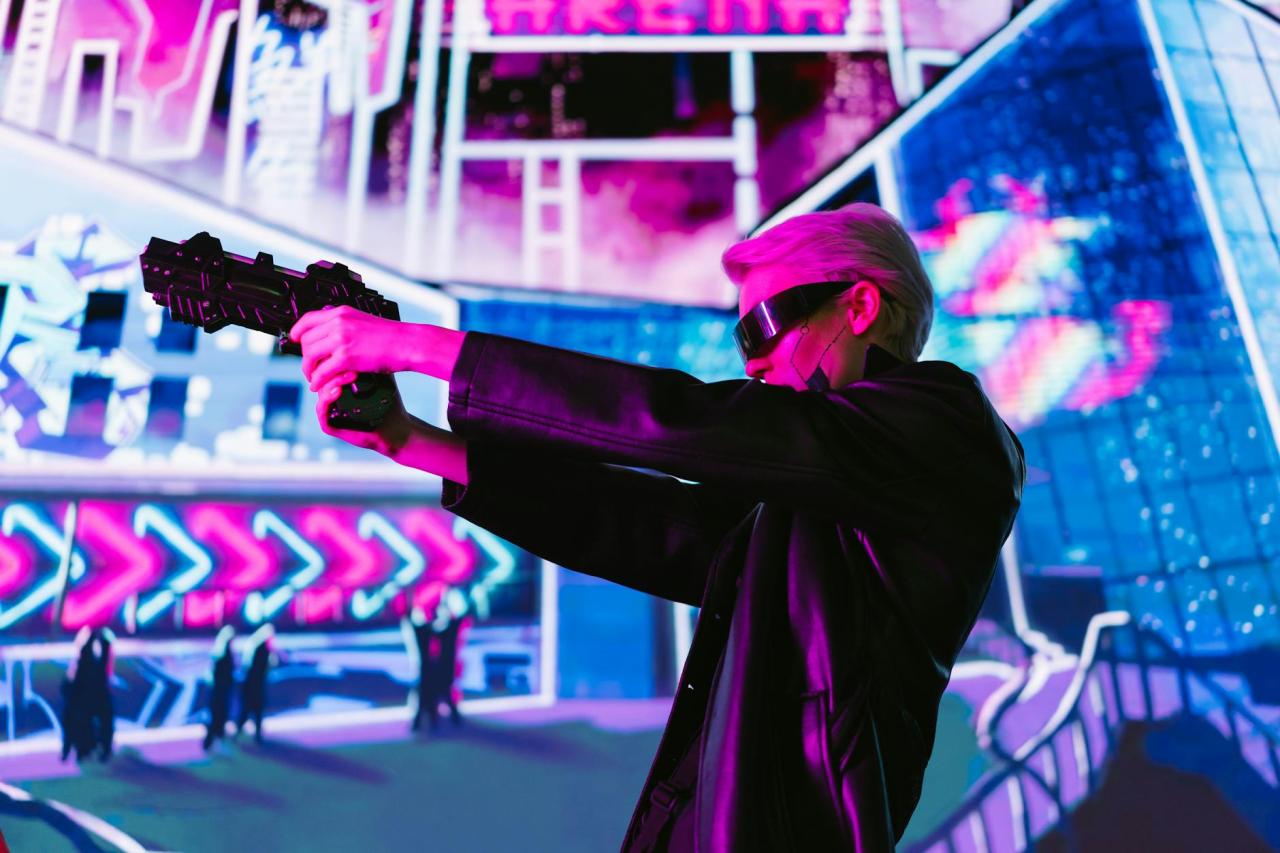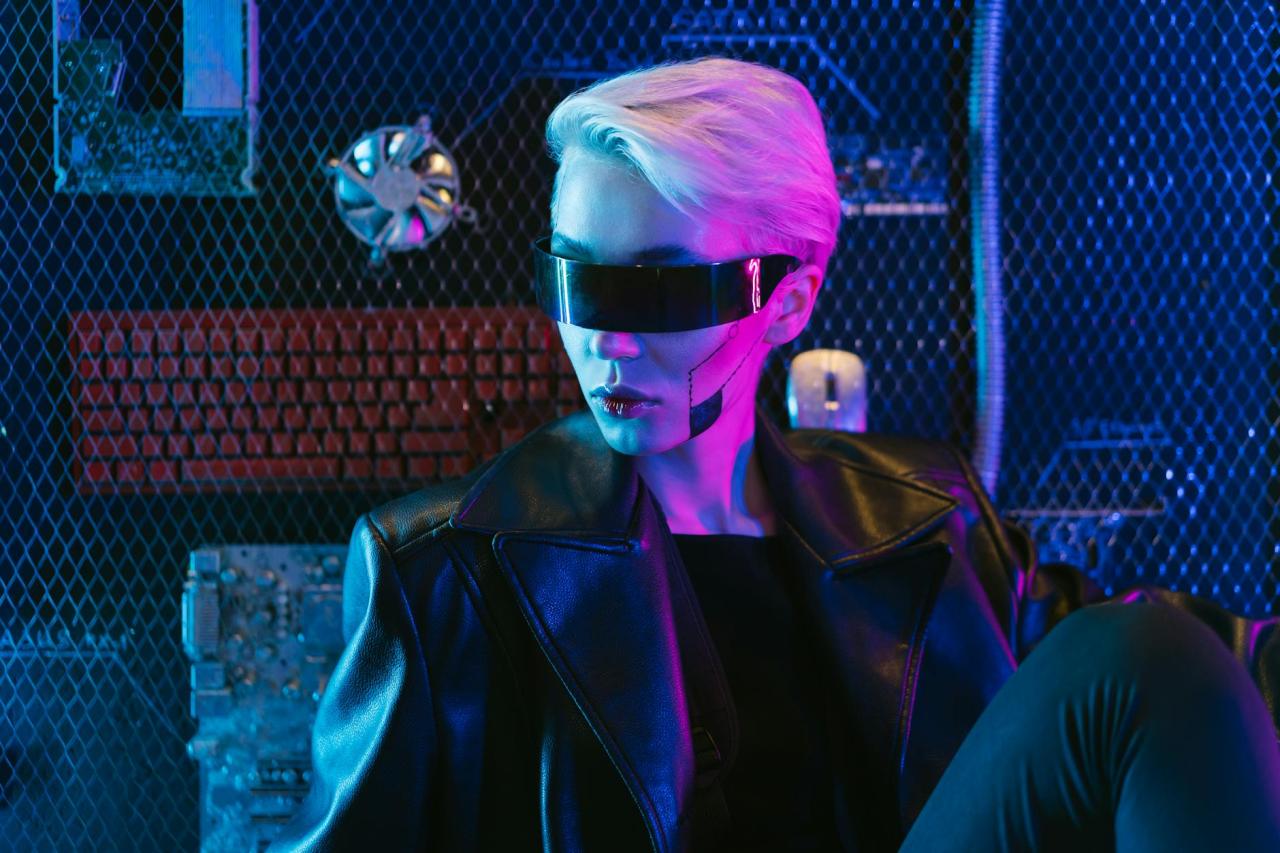The evolution of techwear: from niche subculture to your new favorite jacket

From dystopian dreams to daily commutes.
Scroll through your favorite style inspiration feed, and you’ll inevitably see it: sleek, dark silhouettes, an abundance of pockets and straps, and fabrics that look like they could withstand a monsoon. This is techwear, a fashion subculture that has quietly surged from the underground to influence everything from high-fashion runways to the jacket you grab on a rainy day. But what is this futuristic aesthetic really about, and how did it evolve from a niche interest into a global trend? At KIQIZ, we’re diving deep into the evolution of techwear, charting its course from cyberpunk fantasies to the ultra-wearable ‘gorpcore’ phenomenon you see everywhere today.
So, what exactly is techwear?
Before we journey back in time, let’s establish a clear definition. At its core, techwear is the marriage of cutting-edge technology and apparel design. The guiding principle is function over form, but the magic happens when form becomes a direct result of that function. Think of it as clothing as gear. Every detail, from a water-repellent zipper to the articulated cut of a knee, is there for a reason.

The core tenets of techwear include:
- Utility: This is fashion that serves a purpose. High storage capacity through intelligently placed pockets, straps for carrying accessories, and systems for modularity are key.
- Material innovation: Forget simple cotton. Techwear utilizes advanced textiles like Gore-Tex for waterproofing and breathability, Dyneema for incredible strength-to-weight ratio, and Schoeller Dryskin for water resistance and stretch.
- Comfort and mobility: The human body is the starting point. Garments are designed with articulated joints and ergonomic patterns, allowing for a full range of motion without restriction.
- Aesthetics: While function comes first, a distinct aesthetic has emerged. It’s often characterized by a futuristic, sometimes militaristic or dystopian, look with a predominantly muted or monochromatic color palette (think blacks, greys, and olive greens).
The early days: the birth of functional fashion
Techwear didn’t just appear out of a sci-fi movie. Its roots are firmly planted in the practical needs of mountaineering and the military. In the mid-20th century, as explorers pushed the limits of what was possible in the world’s harshest environments, their clothing had to keep up. This necessity spurred the invention of performance-driven materials. The creation of Gore-Tex in 1969 was a watershed moment—a fabric that could block water from entering but allow water vapor (sweat) to escape was revolutionary.

Simultaneously, military surplus gear, with its rugged construction and utilitarian design, began to filter into civilian life, influencing streetwear and subcultures. However, it was Italian designer Massimo Osti, the genius behind brands like Stone Island and C.P. Company, who truly began to bridge the gap between pure function and high fashion in the 1980s. He experimented relentlessly with fabrics, dyeing techniques, and construction, borrowing ideas from military uniforms and workwear to create garments that were both technically advanced and stylistically groundbreaking.
The cyberpunk influence: a dystopian vision takes hold
As technology advanced into the 1980s and 90s, so did our cultural imagination. Sci-fi films like *Blade Runner* (1982) and animes like *Akira* (1988) presented gritty, rain-slicked futures where characters wore functional, weather-resistant gear to navigate their urban environments. This cyberpunk aesthetic—dark, complex, and deeply intertwined with technology—provided the visual language for the next wave of techwear.

This is where the ‘ninja’ stereotype of techwear truly solidified. German brand Acronym, founded in 1994 by Errolson Hugh and Michaela Sachenbacher, became the pinnacle of this movement. Acronym’s designs are the stuff of legend among enthusiasts. Think jackets with ‘Gravity Pockets’ that drop a phone into your hand with a flick of the wrist, or a ‘JacketSling’ system that lets you carry your coat like a backpack when you move indoors. This was clothing as a user interface—hyper-functional, incredibly detailed, and unapologetically futuristic. The aesthetic was sharp, angular, and almost exclusively black, cementing techwear’s image as a high-concept, niche subculture.
The rise of gorpcore: techwear goes mainstream
For years, techwear remained the domain of a dedicated few. The high price point and intense aesthetic of brands like Acronym kept it from breaking into the mainstream. But then, something shifted. The lines between outdoor performance gear and everyday fashion began to blur, giving rise to a new trend: ‘gorpcore’.
Coined in 2017, ‘gorpcore’ (an acronym for ‘Good Ol’ Raisins and Peanuts,’ a classic trail mix snack) describes the trend of wearing practical, outdoor-focused clothing in urban settings. Suddenly, the Arc’teryx shell jacket wasn’t just for hikers; it was a status symbol spotted on celebrities like Frank Ocean and A$AP Rocky. The North Face’s Nuptse puffer became a streetwear staple, and Salomon trail runners were the footwear of choice for fashion editors.
This shift was driven by several factors:
- A focus on comfort: The rise of athleisure primed us to prioritize comfort and functionality in our daily wardrobe. Gorpcore was the logical next step.
- Logomania and brand cachet: Outdoor brands like Arc’teryx and Patagonia have built a reputation for quality and performance, which translates into a different kind of luxury status.
- Authenticity: In a world of fast fashion, there’s an appeal to clothing that’s built to last and perform a real-world function.
Gorpcore is essentially a more accessible, colorful, and relaxed version of techwear. It takes the core principle—functional clothing—and strips away the intimidating cyberpunk aesthetic, making it easy for anyone to adopt.
Key elements of the modern techwear wardrobe
Whether you’re drawn to the hardcore Acronym aesthetic or the more approachable gorpcore vibe, the foundational pieces remain the same. Understanding these elements is key to incorporating the trend into your own style.
The shell jacket: your urban armor
This is the quintessential techwear garment. A good shell jacket is your first line of defense against the elements. Look for features like taped seams, a DWR (Durable Water Repellent) coating, and breathable waterproof membranes like Gore-Tex. They range from sleek, minimalist designs to complex pieces with multiple pockets and adjustment points.
Cargo pants 2.0: pockets redefined
Forget the baggy, unflattering cargo pants of the 90s. Techwear cargo pants are all about a tapered, articulated fit that allows for movement. The pockets are strategically placed for easy access and designed to hold modern essentials like your phone, wallet, and keys without creating a bulky silhouette.
Innovative fabrics: Gore-Tex and beyond
The soul of techwear lies in its materials. While Gore-Tex is the most famous, many brands have developed their own proprietary fabrics. These textiles are designed to be lightweight, strong, and adaptable to changing conditions. Learning about different fabrics and their properties is part of the fun for techwear enthusiasts.
The footwear: sneakers meet hiking boots
Techwear footwear blends the comfort of a sneaker with the rugged durability of a hiking boot. Brands like Salomon, Hoka One One, and Nike ACG (All Conditions Gear) are leaders in this space. Look for waterproof materials, aggressive tread patterns for grip, and supportive, comfortable cushioning systems.
How to style techwear for today
Intrigued but not sure where to start? You don’t have to go full ‘urban ninja’ to embrace the techwear evolution. Here are a few tips from the KIQIZ style desk on how to make it work for you.
Start with a single statement piece
The easiest way to dip your toe in is to invest in one great piece. A high-quality shell jacket or a pair of well-fitting cargo pants can easily be integrated into your existing wardrobe. Pair a technical jacket with your favorite jeans and sneakers for a look that’s both practical and stylish.
Master the art of layering
Layering is fundamental to the techwear ethos. A typical system involves a moisture-wicking base layer, an insulating mid-layer (like a fleece or lightweight insulated vest), and a protective outer shell. This allows you to adapt to any weather by adding or removing layers as needed. Plus, it creates visually interesting and complex outfits.
Play with silhouettes and proportions
Don’t be afraid to experiment. Techwear often involves a mix of slim and wider cuts. Try pairing tapered cargo pants with a slightly oversized, boxy jacket. The contrast in proportions is key to nailing the modern aesthetic.
Embrace ‘soft techwear’
You don’t need the most expensive, hardcore gear to get the look. Many mainstream brands now offer clothing with technical features. Look for trousers with stretch fabric, t-shirts made from merino wool (which is naturally temperature-regulating and odor-resistant), and jackets with DWR coatings. This ‘soft techwear’ approach gives you the benefits of performance without the extreme aesthetic or price tag.
The future of techwear: where do we go from here?
The evolution of techwear is far from over. As technology continues to advance, so will our clothing. We’re seeing a growing emphasis on sustainability, with brands using recycled materials and developing more eco-friendly waterproofing methods. The integration of ‘smart’ technology—fabrics that can regulate temperature, monitor vitals, or even change color—is on the horizon.
What started as a niche subculture for cyberpunk fans and gear-heads has fundamentally changed our relationship with clothing. It taught the mainstream fashion world that function, comfort, and durability are just as important as aesthetics. Whether you’re navigating a sudden downpour on your way to work or simply appreciate a well-placed pocket, you have the techwear evolution to thank. The future is here, and it’s dressed to be ready for anything.




